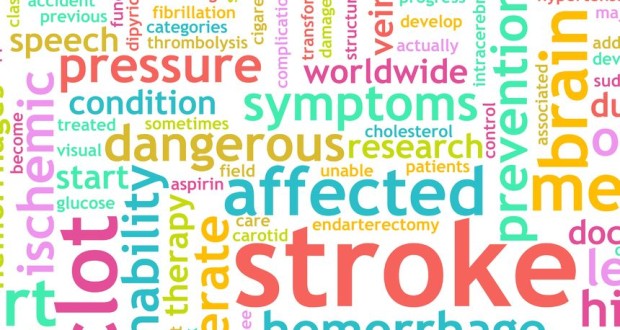Over the decades, strokes have gained a well-deserved reputation as one of the biggest health threats facing Americans. It’s hard to minimize the widespread impact of strokes, especially when considering the following facts (courtesy of the Centers for Disease Control and Prevention):
- Approximately 130,000 Americans die from strokes each year, a figure equivalent to 1 out of 18 deaths in the United States
- One American dies from stroke every four minutes.
- There are more than 795,000 stroke victims every year in the US. Of this amount, roughly 610,000 are first-time strokes. About one-quarter of strokes are classified as recurrent strokes, or strokes suffered by people who have had strokes in the past.
- The most common types of stroke are ischemic strokes, which occur after blood clots (thickened masses of blood) block the bloodstream’s access to the brain. About 87% of strokes are ischemic.
- When all of the costs for health care services, medications and missed work days are accounted for, strokes cost the US economy $54 billion each year.
- Many long-term disability cases are attributed to strokes.
Though strokes are hardly uncommon, many people fail to catch the signs that a stroke is imminent. This isn’t just a problem in the United States; according to UK Daily Mail, many Britons would not recognize the symptoms of an impending stroke.
The Daily Mail focused their story on a poll conducted by ICM research. The polling company asked 2,000 respondents about the signs of minor strokes. The results of the poll revealed that two-thirds of respondents would not recognize the initial symptoms of a small stroke. Furthermore, a stunning 75% of those surveyed would not seek emergency room help upon experiencing such symptoms.
The warning signs of stroke sometimes appear in the form of mini-strokes, also known as transient ischemic attacks (TIA). A TIA can easily foreshadow a stroke; roughly 10 percent of untreated TIA victims suffer a stroke in the following week. Unfortunately, the ICM study found that most people (66 percent of respondents) had not even heard of TIA, much less the telltale signs of this condition.
The consequences of failing to catch an imminent stroke can be disastrous. When deprived of oxygen-rich blood, the brain’s tissues begin to wither; if brain tissue goes too long without oxygen, it can very well die completely. Prompt medical attention can not only limit the brain damage sustained by the patient, but can also save the stroke victim’s life.
Getting Help “Fast”
To assist those concerned about the risks of strokes, the National Stroke Association has developed some guidelines for spotting both transient ischemic attacks and strokes when they occur. These guidelines can be easily recalled through the acronym FAST, and are described below:
F stands for the face. During a transient ischemic attack, a patient’s face will begin to droop noticeably on one side, and the person may be unable to smile or otherwise move part of their mouth.
A is for the arms of the TIA sufferer. A person in the middle of such an attack will usually struggle with lifting their arms. A good test to perform is to ask the patient to lift both arms up into the air; if one arm starts to wobble in a downward direction, the National Stroke Association advises seeking medical attention.
S references the speech of the patient. A transient ischemic attack can make it hard for the patient to speak without slurring his or her words. As with the preceding tip, this step also includes a useful test; just ask the patient to repeat a simple phrase.
T stands for time. As in, if you see any of the above signs, then it’s “time” to call 911.
FAST isn’t the only acronym to help identify strokes and TIAs. A second set of tips, abbreviated STROKE, was developed by Dr. Jill Bolte Taylor, a Harvard Medical School graduate and a trained neuroanatomist (a neuroanatomist is a doctor who studies the brain). The STROKE guidelines read as follows:
S references any obvious speech problems displayed by the patient.
T refers to numbing in tingling in the body
R is for the person’s diminished ability to remember certain things or think clearly
O stands for “off balance.” In other words, a person in the midst of a stroke or TIA may struggle with his or her balance and coordination.
K is for “killer headache.” It may sound amusing, but there is nothing funny about massive headaches that precede strokes.
E represents the patient’s eyes. People on the verge of suffering a stroke often have problems with their vision.
 Natural Knowledge 24/7 Educate yourself with nutrition, health and fitness knowledge.
Natural Knowledge 24/7 Educate yourself with nutrition, health and fitness knowledge.






